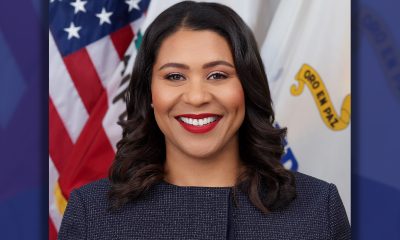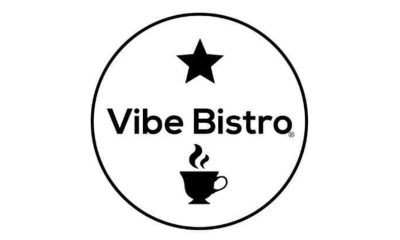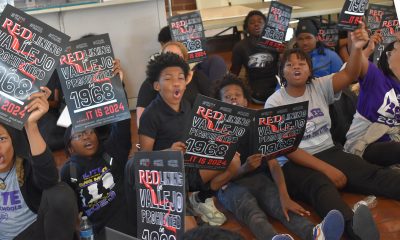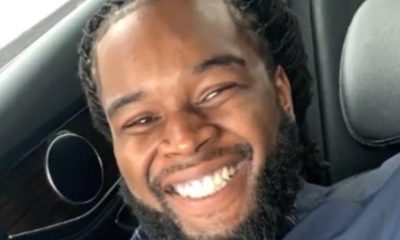California Black Media
Opinion: How We Can Protect Our Communities from COVID After the Pandemic
As pastor of the First African Methodist Episcopal Church of Los Angeles (FAME), the oldest African American church in the city, I have always strived to lead my members to health and prosperity. But nothing could have prepared us for the challenges of the pandemic, which affected every aspect of our church — from how we conducted services to how we communed with people. But the church leadership and I knew it was our calling to take on COVID-19 and protect our flock.
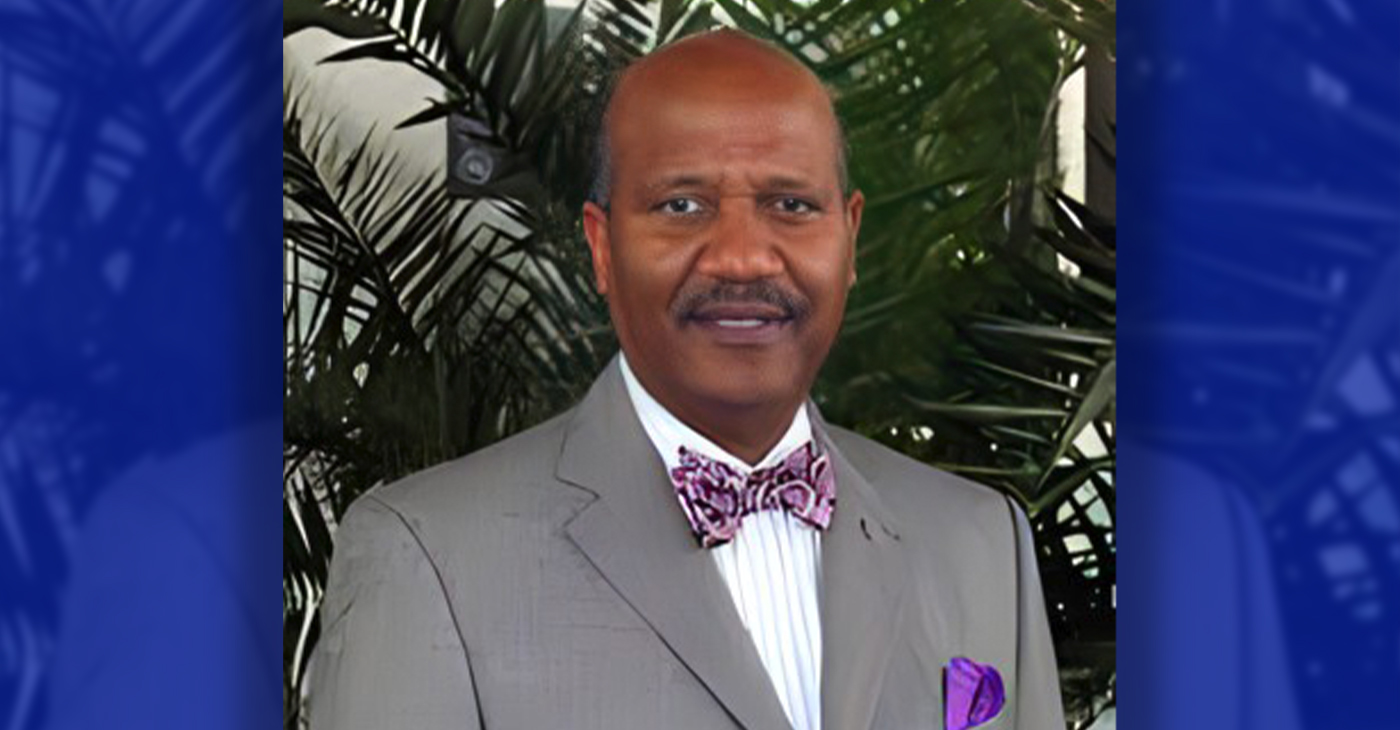
By Rev. Edgar Boyd
California Black Media
Every Sunday, I look out at the faces of my congregation, and I am grateful that we have overcome the many challenges we have faced over the past few years. At the same time, I am also reminded of all the beautiful souls we have lost to COVID-19. The pandemic has upended the lives of many in our community, and the residual effects are still being felt.
As pastor of the First African Methodist Episcopal Church of Los Angeles (FAME), the oldest African American church in the city, I have always strived to lead my members to health and prosperity.
But nothing could have prepared us for the challenges of the pandemic, which affected every aspect of our church — from how we conducted services to how we communed with people.
But the church leadership and I knew it was our calling to take on COVID-19 and protect our flock. Over the years, we have continued to learn and evolve our approaches to address the overall health, social and educational needs of our parishioners and the larger South LA community.
Although we have made it through the most difficult period of the pandemic, COVID-19 remains a threat to our loved ones, especially Black communities in California who have been disproportionately impacted by the virus.
According to the Los Angeles County Public Health Department, Black residents in Los Angeles County were twice as likely to be hospitalized with COVID-19 as white residents, and one-and-a-half times more likely to die from the virus. These disparities are unacceptable, and we must work to reduce them.
Now, with COVID-19 vaccines and treatments widely available, we have the tools we need to protect ourselves and our loved ones from serious illnesses and deaths. We can return to doing the things and seeing the people we love.
Our initial focus was to prevent COVID-19 exposure, but sometimes this was not always possible. Now, we are shifting priorities to making sure our members know what to do if they test positive.
Although they are free, widely available, and effective, COVID-19 medications have been relatively unknown within my community. We are starting to integrate initiatives to raise awareness around COVID-19 medications into our other long-standing programs to support our community members who test positive.
Scientific evidence shows that when COVID-19 medications are taken within the first week of testing positive, they can prevent serious illness, hospitalization, and death by half or more. Timing is crucial as most of the medications must be taken within the first five days to be effective.
To address these issues, we have had to overcome many barriers, one of the biggest being my community’s mistrust of the medical system due to generations of racism and mistreatment. We have worked hard to educate about COVID-19 safety and rebuild trust in the medical system.
We have also partnered with other trusted entities and organizations like the University of Southern California and Jewish congregations to share resources, materials, and knowledge to fight the COVID-19 pandemic. We have made it a priority to educate those close to us about the resources and tools available to stay safe and protect ourselves, including vaccines and treatments.
The good news is that we know what works. Our church is hosting teachable Thursdays that highlight influential medical professionals to discuss vaccination benefits, side effects, and other important information about COVID-19. Additionally, we opened a wellness center to create a welcoming and trusting environment for those in the community, operated by community members to provide necessary services that address COVID-19, such as vaccinations, testing, and education around COVID-19 medications.
We invite and welcome all Angelenos who have questions or need support to come and access these services.
Overcoming challenges that Black communities here in Los Angeles and throughout California have faced due to COVID-19 has not been easy. However, through hard work, listening to our community, and the power of prayer, we have found ways to win over the virus. After all, prayers are powerful, but even more so when paired with COVID-19 medications.
To learn more about COVID-19 medications, visit YouCanBeatIt.org.
About the Author
The Rev. Edgar Boyd is pastor of the First African Methodist Episcopal Church of Los Angeles (FAME), the oldest African American church in the city. Under his leadership, FAME is working to address the health, social and educational needs of parishioners and the surrounding community.
Activism
Oakland Post: Week of May 8 – 14, 2024
The printed Weekly Edition of the Oakland Post: Week of May May 8 – 14, 2024
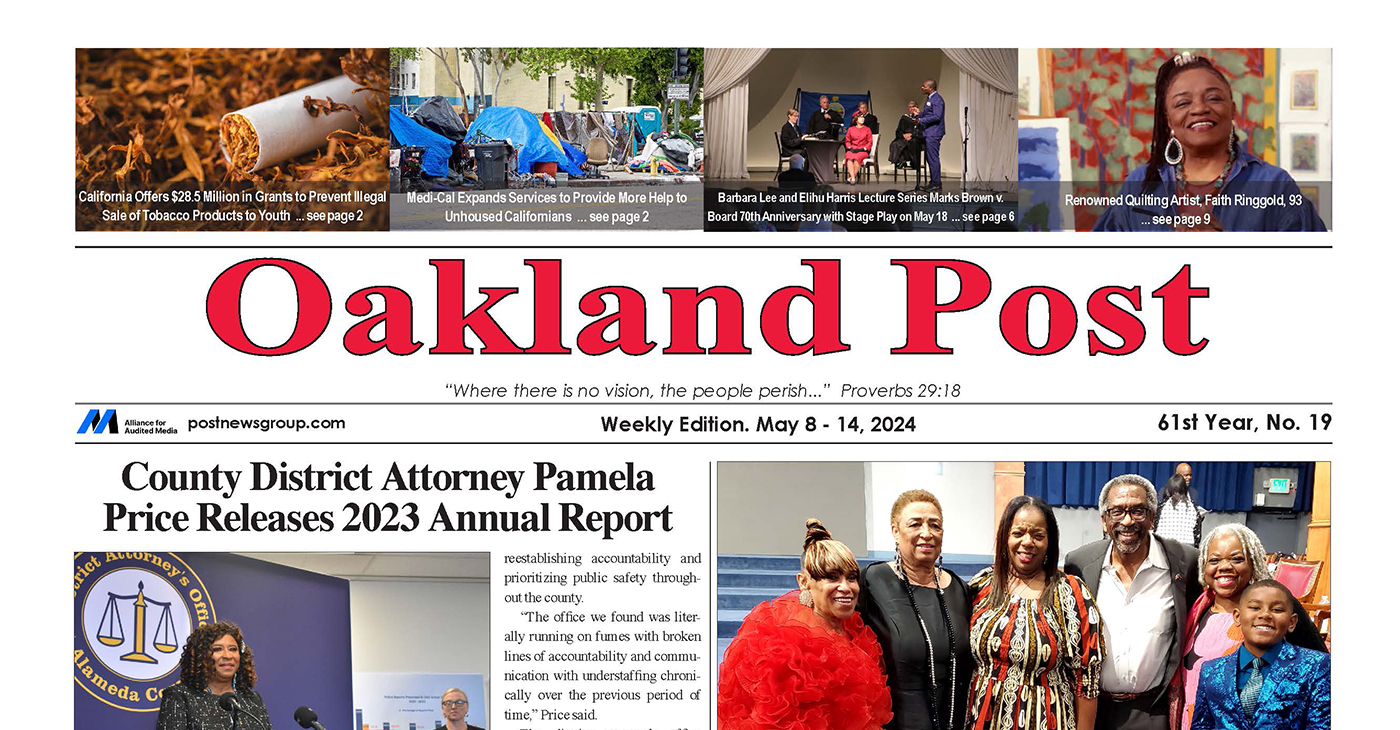
To enlarge your view of this issue, use the slider, magnifying glass icon or full page icon in the lower right corner of the browser window. ![]()
California Black Media
Cinco De Mayo: Five Interesting Facts You Should Know About the Popular Mexican American Holiday
To explore the historical significance of Cinco De Mayo, we step back to the origins of the commemoration, share how some Mexican American Californians regard it and trace how it has morphed into the celebrations we see today.
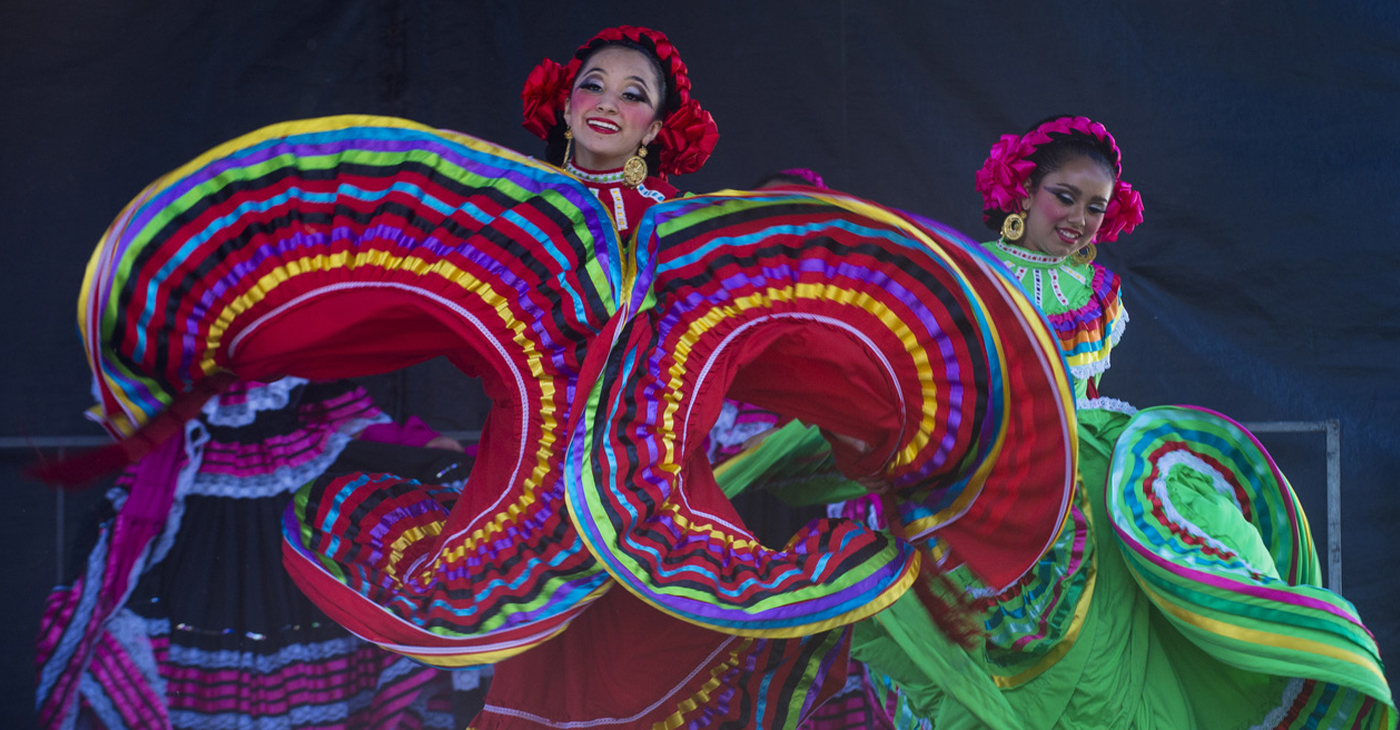
By Edward Henderson, California Black Media
To explore the historical significance of Cinco De Mayo, we step back to the origins of the commemoration, share how some Mexican American Californians regard it and trace how it has morphed into the celebrations we see today.
Celebrations in the United States began in 1862 in Columbia, California, a small town located in the foothills of the Sierra Nevada in Tolumne County, according to that town’s website.
Today, millions of Americans celebrate Cinco De Mayo annually with 120 official celebrations organized across the United States.
This day has become a cultural point of pride for Mexican Americans and other Latino communities in the United States. It serves as a time to affirm and celebrate their cultures with other Americans of all backgrounds as they highlight their contributions to American history and society.
Joseph Soltero, a Mexican American living in Escondido, shared his perspective on Cinco de Mayo with California Black Media. He learned about Cinco De Mayo from his grandfather and talked about the extent to which his family and San Diego County community celebrate the holiday.
“We knew September 16 was really Mexican Independence Day, but kids in my school would always mistake Cinco De Mayo as our Independence Day. [Cinco De Mayo] is not really even a Mexican holiday,” said Soltero. “It’s something people do to have an excuse to buy drinks, have fun and spend a little money at taco shops.”
Like Soltero, many Mexican Americans (and other Latino Californians) do not take the support and solidarity they receive from people of other races on Cinco De Mayo for granted. They also appreciate when people take the time to learn about the cultural significance of the day and avoid some of the cultural tropes that can easily whisper undertones of racism.
To help raise your awareness about the origins and cultural significance of the day, here are 5 little known facts about Cinco De Mayo:
- Cinco De Mayo is not Mexican Independence Day. It is the anniversary of the Battle of Puebla. This military victory on May 5, 1862, over the French forces of Napoleon III was hailed as a symbol for Mexican resistance to foreign influence.
- The holiday was not given much historical significance outside of Puebla, and it has not been celebrated on a large scale in Mexico. However, during the Civil War, Mexican Americans in California, Oregon and Nevada who supported the Union drew inspiration from the victory over the French-backed Confederate forces.
- The Chicano civil rights movement in the 1940s gave a new energy to celebration of the holiday in the United Sates as a symbol of national pride.
- In the 1980s and 1990s, beer companies’ marketing strategies targeted Mexican Americans by encouraging them to celebrate their heritage – and Cinco De Mayo –with Coronas, Bud Light, and Dos Equis. This created the perceived connection between Cinco De Mayo, alcohol, and merrymaking.
- Los Angeles hosts the largest Cinco De Mayo celebration in the country.
As we join Mexican American Californians to celebrate Cinco De Mayo next week, let’s deepen our cultural understanding.
Let’s use this occasion to commit to learning more about our neighbors, colleagues and friends of other races and ethnicities.
This resource is supported in whole or in part by funding provided by the State of California, administered by the California State Library in partnership with the California Department of Social Services and the California Commission on Asian and Pacific Islander American Affairs as part of the Stop the Hate program. To report a hate incident or hate crime and get support, go to CA vs Hate.
Antonio Ray Harvey
Working Group: More Entry-Level Homes Could Help Solve Housing Crisis
The Community Housing Working Group hosted a briefing on April 23 at Cafeteria 15L in Sacramento. Discussions focused on how the housing crisis in California affects Black and Brown communities and explored ways to provide low-income families and individuals with affordable housing.
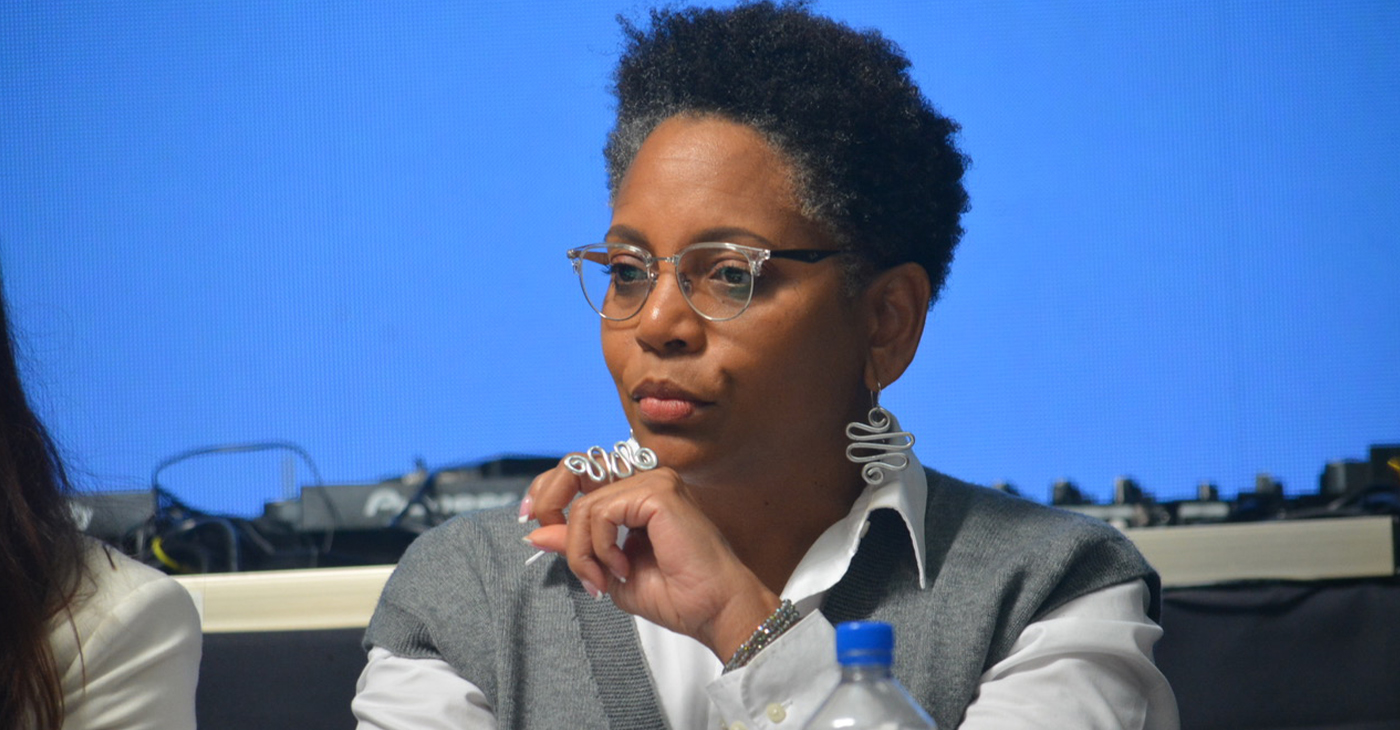
By Antonio Ray Harvey, California Black Media
The Community Housing Working Group hosted a briefing on April 23 at Cafeteria 15L in Sacramento. Discussions focused on how the housing crisis in California affects Black and Brown communities and explored ways to provide low-income families and individuals with affordable housing.
Tia Boatman Patterson, CEO and President of the California Communities Reinvestment Corporation, said “entry-level housing” is not available as it was in the past, adding that affordable units were a major point of entry into homeownership for many families in the Black community.
“My mother bought her first house when I was in junior high. It was an 850-square foot, two-bedroom and one-bathroom house in 1978. That house cost $30,000,” Boatman-Patterson said.
“A woman working part-time at JCPenney was able to afford that house. We don’t build these types of housing now. We do not build entry-level homeownership,” she added.
The Community Housing Working Group is a collection of diverse community organizations from across California working together to address housing challenges in their communities. The organization believes that solving the affordable housing crisis will require creating enough smaller, lower-cost, multi-family homes located near jobs, transit, and good schools.
The briefing included a panel discussion titled, “Exclusionary Zoning: A Look Back and a Path Forward.” Boatman-Patterson participated in that session along with Henry “Hank” Levy, Treasurer-Tax Collector for Alameda County, and Noerena Limón, consultant, Unidos U.S., and Board Member of California Housing Finance Agency.
Boatman-Patterson, a former Associate Director for Housing, Treasury and Commerce in the Office of Management and Budget for the Biden Administration, started her presentation by highlighting how exclusionary single-family zoning is contributing to continued segregation of California communities.
She said that single-family zoning originated in the Bay Area city of Berkeley in 1916.
“By creating single-family zoning and having fenced-off communities, you were able to exclude the ‘others,’” Boatman-Patterson said. “It really was a method to exclude — what they called ‘economic segregation’ — but that was a guise for racial segregation. Single-family zoning, along with redlining, became a systemic approach to exclude based on affordability.”
Title VIII of the federal Civil Rights Act of 1968 — commonly known as the Fair Housing Act of 1968 – is the U.S. federal legislation that protects individuals and families from discrimination in the sale, rental, and financing of housing. It was passed to open the doors to affordable housing.
In 1968, 65.9% of White families were homeowners, a rate that was 25% higher than the 41.1% of Black families that owned their homes, according to National Low-Income Housing Coalition. Today, those figures have hardly changed in the Black community, although White homeownership has increased five percentage points to 71.1%.
Boatman Patterson said the rate has not changed in Black and Brown communities because financing for affordable entry-level homes is almost nonexistent. The homeownership disparities contribute to the disturbing racial wealth gap in the nation, according to the National Low-Income Housing Coalition’s October 2018 report.
“We really must align the financing with the actual building of units, which we haven’t necessarily done. Because of this misalignment, I think we continue to see problems,” Boatman-Patterson said.
-

 Community4 weeks ago
Community4 weeks agoFinancial Assistance Bill for Descendants of Enslaved Persons to Help Them Purchase, Own, or Maintain a Home
-

 City Government1 week ago
City Government1 week agoCourt Throws Out Law That Allowed Californians to Build Duplexes, Triplexes and RDUs on Their Properties
-

 Activism2 weeks ago
Activism2 weeks agoOakland Post: Week of April 24 – 30, 2024
-

 Business4 weeks ago
Business4 weeks agoV.P. Kamala Harris: Americans With Criminal Records Will Soon Be Eligible for SBA Loans
-

 Community4 weeks ago
Community4 weeks agoAG Bonta Says Oakland School Leaders Should Comply with State Laws to Avoid ‘Disparate Harm’ When Closing or Merging Schools
-

 Community3 weeks ago
Community3 weeks agoRichmond Nonprofit Helps Ex-Felons Get Back on Their Feet
-

 Community3 weeks ago
Community3 weeks agoOakland WNBA Player to be Inducted Into Hall of Fame
-

 Community3 weeks ago
Community3 weeks agoRPAL to Rename Technology Center for Retired Police Captain Arthur Lee Johnson

